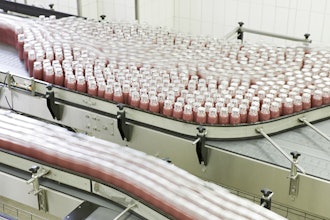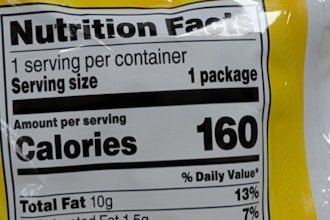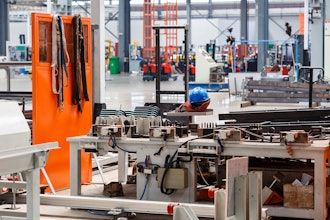
The events that unfolded in 2020 will shape the future of modern manufacturing, but it’s time to look ahead and consider how leveraging the power of technology will help manufacturers succeed in 2021.
The adoption of cloud-hosted technologies is increasing to assist in the major shift to remote processes, smart manufacturing is being harnessed to optimize every aspect of production methods, and taking a strategic approach to labeling operations will allow for businesses to react faster and smarter to market shifts.
Barcode labeling is a crucial process that is essential for the health of the food supply chain to remain compliant, secure, and efficient. As manufacturers across industries are consistently researching and implementing technologies to create more efficient and streamlined processes, there are labeling strategies to consider that will support growth in 2021 and beyond. With that in mind, here are three labeling trends to support growth in 2021:
Cloud-Ready Technologies Are Here to Stay
While cloud-hosted applications are no longer an emerging technology, they have been consistently growing and adoption will continue to increase in 2021 as a tool to keep businesses agile in the face of uncertain times. With a shift to remote work processes and cloud-hosted technologies on the rise, 2021 will bring an upshoot of labeling software providers offering ways for local labeling software to access data stored in the cloud to populate variable data onto label templates at print time.
A cloud-hosted label printing interface is a simple and secure way for food manufacturers to print the right labels with the right data at the right time. Cloud-hosting labeling software makes license management simpler for large enterprises with many locations, whether it’s in the public cloud (AWS, Azure, Google, etc.) or in a private cloud.
If cloud-hosting is already integrated with the organization's technology environment, a trend within the labeling industry is hosting label printing automation software in the cloud. Manufacturers are enabled to trigger label print jobs directly from a business system with the right information from anywhere in the world. 2021 will continue to be a year of evolving labeling solutions and infrastructure around cloud technologies.
Smart Manufacturing Keeps Getting Smarter
Smart manufacturing is the way businesses can harness the power of data to optimize every aspect of their production process. Barcodes and Radio Frequency Identification (RFID) technology are some of the most common data carriers of IoT devices, therefore something manufacturers must keep a pulse on.
Labeling software can be a helpful tool in enabling smart device communication to maximize value.
Device-to-software communication helps drive data where it needs to be while removing harmful manual steps that can result in major time wastes or costly chargebacks. Streamlined connections in a manufacturing labeling environment can enable the selection of the correct label template, return the correct database record by using a scanner, or send weight data directly from a scale to a printed variable on a label.
Another tool to support manufacturing growth with smart manufacturing is barcode verification. Determining the quality of a printed barcode against a grading scale, known as barcode verification, is a required assurance measure across many industries.
Unfortunately, many companies today are using a spot-check method and only verifying a sample of barcodes. This leaves businesses open to low ratings, costly chargebacks, and the threat of damaged or low-quality barcodes. In 2021, there will be a major jump in companies adapting end-to-end barcode verification systems that validate every single barcode.
Labeling Software as a Strategy
A challenge many companies were faced with in 2020 was not being able to pivot to meet challenges they had not seen before. Taking a strategized approach to barcode labeling in the supply chain will ensure a quicker response to market shifts when something unexpected happens.\
If there is a sudden logo or product change, smart label templates can be used to update these timely and efficiently. Printing labels on-demand removes the need for wasteful label rooms that house rolls of pre-printed stock that become obsolete if a small change is made to the label design.
To provide the infrastructure to make changes accurately and to ensure labeling isn’t a bottleneck, an automated label approval process can assist in executing labeling as part of a strategized approach and ensure only approved labels enter a production environment.
The events of 2020 are in the not-so-distant past but have shaped how manufacturing will operate in 2021 and beyond. Concepts such as cloud-ready applications, smart manufacturing and IoT connected devices, and taking a strategic approach to barcode labeling serve as tools to help streamline business processes.
Companies that leverage powerful and modern technologies to overcome newfound challenges will help move manufacturing forward.























